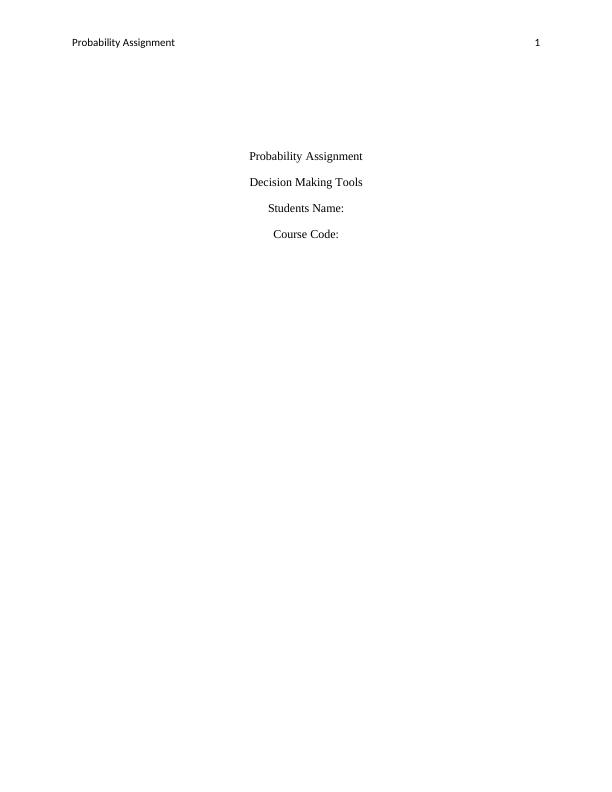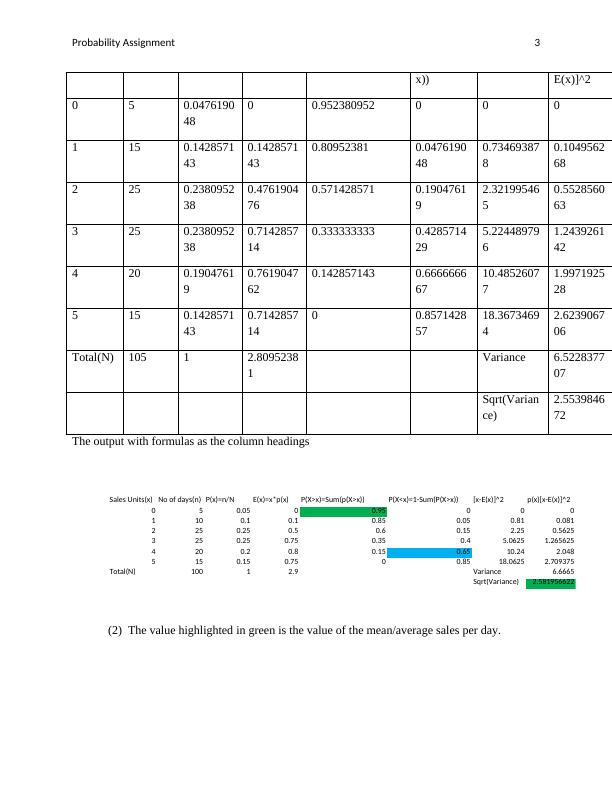Probability Assignment
The assignment involves answering questions related to probability, including the meaning of expected value and its computation for a discrete probability distribution, as well as analyzing daily sales data of loaves of sourdough bread.
11 Pages2386 Words433 Views
Added on 2023-04-08
About This Document
This probability assignment covers topics such as expected value, computation in a discrete probability distribution, Excel output and formulas for sales daily data, probability of selling units, variance, standard deviation, and more.
Probability Assignment
The assignment involves answering questions related to probability, including the meaning of expected value and its computation for a discrete probability distribution, as well as analyzing daily sales data of loaves of sourdough bread.
Added on 2023-04-08
ShareRelated Documents
End of preview
Want to access all the pages? Upload your documents or become a member.
Probability and Expected Value
|6
|679
|180
Accounting and Decision Support Tools
|11
|1512
|308
Accounting Decision Support Tools
|10
|1397
|275
Expected Value, Probability, Variance, and Probability Calculations
|11
|1354
|301
Calculating Expectation and Variance
|9
|1161
|124
Probability, Statistical Independence, Population Structure and Confidence Interval
|9
|950
|236




